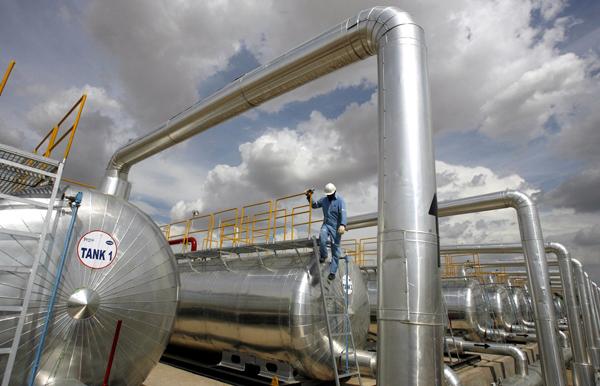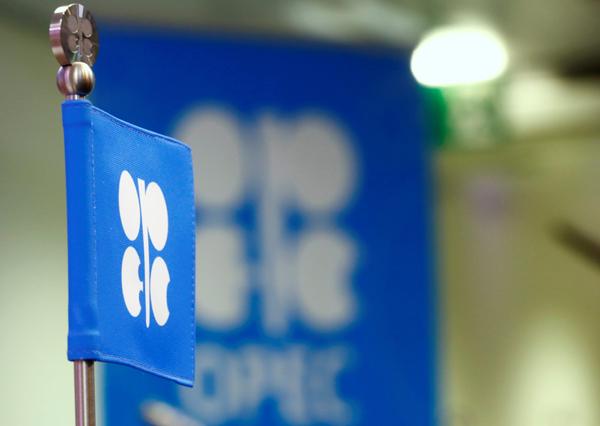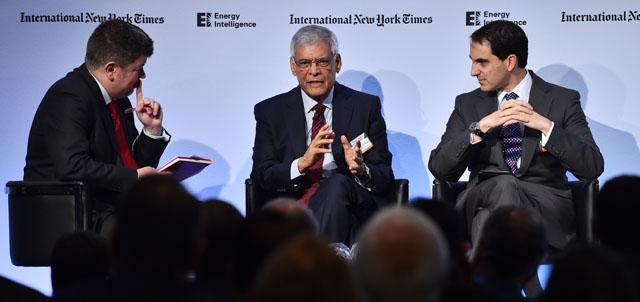You are here
OPEC to stay the course despite fears of $20 oil price
By Reuters - Nov 26,2015 - Last updated at Nov 26,2015

A Cairn India employee works at a storage facility for crude oil at Mangala oil field at Barmer in the desert Indian state of Rajasthan in this file photo (Reuters photo)
LONDON/DUBAI — The Organisation of Petroleum Exporting Countries (OPEC) is determined to keep pumping oil vigorously despite the resulting financial strain even on the policy's chief architect, Saudi Arabia, alarming weaker members who fear prices may slump further towards $20.
Any policy U-turn would be possible only if large producers outside the exporters' group, notably Russia, were to join coordinated output cuts.
While Moscow may consult OPEC oil ministers before their six-monthly meeting next week, the chances of it helping to halt the price slide remain slim.
"Unless non-OPEC say they are willing to help, I think there will be no change," said a delegate from a major OPEC producer. "OPEC will not cut alone."
When the exporters' group last met in Vienna in June, Saudi Oil Minister Ali Al Naimi and those from other wealthy Gulf states could barely hide their jubilation.
OPEC's historic decision in November 2014, to pump more oil and defend its market share against surging rival suppliers, was working, they proclaimed as crude traded near $65 per barrel. Six months later, it has hit $45, down from as much as $115 in the middle of last year.
Now some member states are talking about a return to $20 oil, last seen at the turn of the millennium. They point to Iranian confidence that international sanctions on its economy will be lifted by the end of the year.
"Iran is announcing its production is going to increase as soon as they lift the sanctions and we need to do something. We (OPEC) cannot allow going into a war of prices. We need to stabilise the market," Venezuelan Oil Minister Eulogio del Pino said on Sunday.
Asked how low prices could go next year if OPEC failed to change course, he said: "Mid-20s."
Goldman Sachs said this year it saw a possibility of crude going even below $20 because of the huge global oversupply, a strong dollar and a slowing Chinese economy.
Most analysts doubt the Iranian sanctions will be lifted before next spring under its nuclear deal with world powers, but sooner or later its output will rise.
Saudi Arabia under strain
Already the collapse in prices has partly achieved OPEC's goals. It has boosted global demand and curbed growth in supplies of US shale oil, which is relatively expensive to produce.
Non-OPEC supply is also expected to fall for the first time in almost a decade next year as struggling producers cut back on capital spending.
But the world is still producing much more oil than it needs. Russian output has unexpectedly set new records and global stocks are ballooning.
Even the finances of Saudi Arabia, which led OPEC's policy shift, are under more strain. Standard & Poor's rating agency forecasts its budget deficit will rocket to 16 per cent of the gross domestic product (GDP) in 2015 from 1.5 per cent in 2014.
Riyadh describes this year's deficit as manageable.
However, Bank of America Merrill Lynch said on Monday it believed the pressure was so high that the Saudi government would be forced either to devalue its dollar-pegged currency or cut oil output.
Such a cut would mean executing an about-face that many rivals would interpret as a strategy failure.
Keeping the taps open while hoping for a longer-term payoff still appears to be the choice of Riyadh and its wealthy Gulf allies — Qatar, the United Arab Emirates and Kuwait.
Growing criticism
Russia may attend informal consultations with OPEC before the Vienna meeting on December 4 but there is little likelihood Moscow will change its stance and work with OPEC on cutting output, sources said.
OPEC kept policy unchanged at the June meeting apparently with no major dissent. But this time, the opposition from OPEC hawks and poorer members, such as Venezuela, is more visible and the criticism is getting stronger.
"I don't think anything will happen because the Saudis do not want to reduce production. They are shooting themselves in the foot. And they are shooting everyone else," said a second OPEC delegate, who asked not to be named.
Illustrating the growing divisions, OPEC was unable to agree in November on an update of its long-term strategy. Iran and Algeria, in comments on a draft OPEC document seen by Reuters, suggested the group should resume defending prices and controlling supply through quotas for member states.
But even some of those in OPEC who support such steps see little chance of their being agreed.
"I believe that OPEC will not reach an agreement to control production rates and the Saudis will stand by their strategy," said a third OPEC delegate. "No quotas will reached."
OPEC ditched quotas when it set its overall output target at 30 million barrels per day (bpd) for 2012. This has been exceeded all this year, driven by record Saudi and Iraqi output. According to OPEC figures, production was 31.38 million bpd last month.
Ministers might consider raising the ceiling to 31 million bpd to accommodate Indonesia, which pumps about 900,000 bpd and is rejoining OPEC after a seven-year break, delegates say.
A big unknown for 2016 is how much extra oil Iran can produce quickly. Gulf OPEC delegates predict a modest 100,000-200,000 bpd, while Tehran says it could pump another 500,000 bpd within a few months of the lifting of sanctions.
"At present, I can't see any indication that Saudi Arabia will seek to alter its market-share oriented strategy," said David Fyfe, head of research at trading firm Gunvor.
"The resilience of the strategy will be tested over the next 12-18 months by any production increases that emerge from Iran, Iraq and Libya," he added.
Related Articles
VIENNA/DUBAI — OPEC will debate an oil output cut of 4-4.5 per cent for all of its members except Libya and Nigeria next week but the deal's
Oil production by members of the Organisation of Petroleum Exporting Countries (OPEC) is unlikely to change much in 2015 and there is no need to panic at the crude price drop, OPEC's secretary general said on Wednesday, adding to indications the exporter group is in no hurry to cut output.
LONDON — The Organisation of the Petroleum Exporting Countries (OPEC) on Monday predicted global demand for its crude oil will be less than


















